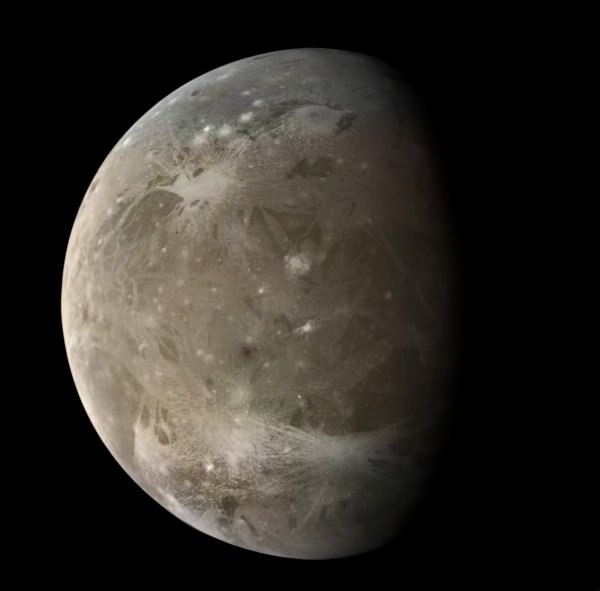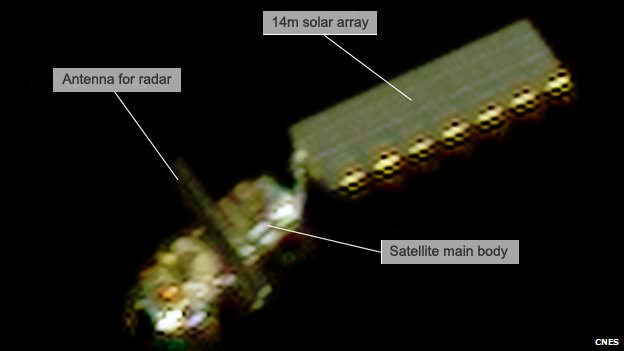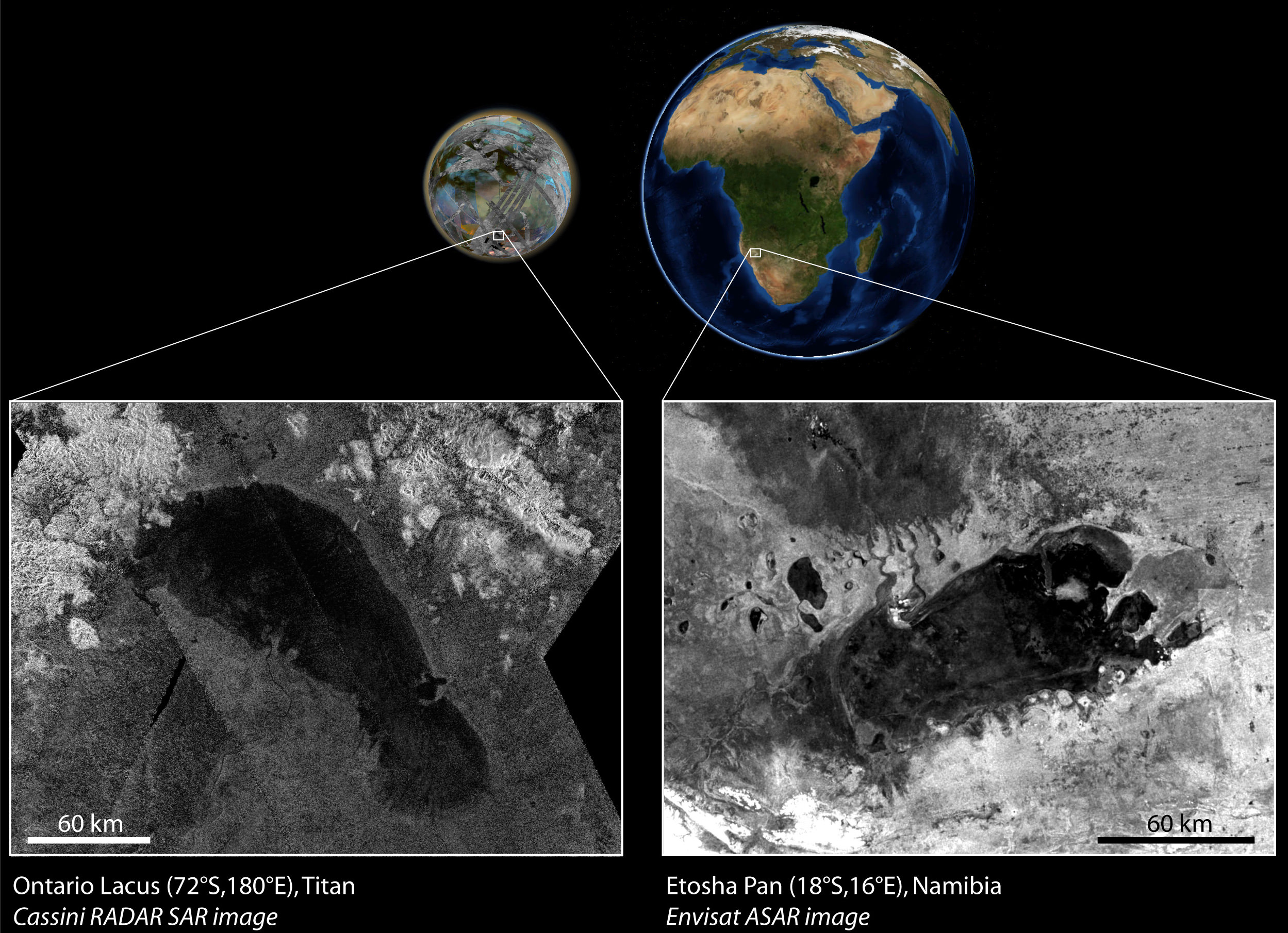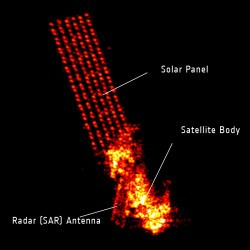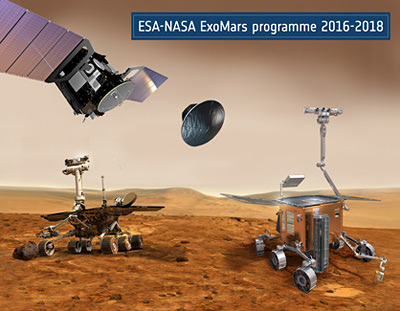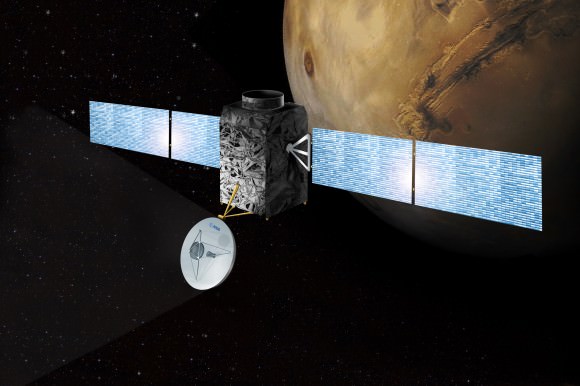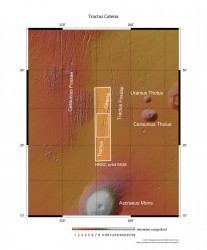[/caption]
The European Space Agency has given the go-ahead for an exciting mission to explore the icy moons of Jupiter, as well as the giant planet itself.
JUICE — JUpiter ICy moons Explorer — will consist of a solar-powered spacecraft that will spend 3.5 years within the Jovian system, investigating Ganymede, Europa and the upper atmosphere of Jupiter. Anticipated to launch in June 2022, JUICE would arrive at Jupiter in early 2030.
As its name implies, JUICE’s main targets are Jupiter’s largest icy moons — Ganymede and Europa — which are thought to have liquid oceans concealed beneath their frozen surfaces.
The largest moon in the Solar System, Ganymede is also thought to have a molten iron core generating a magnetic field much like Earth’s. The internal heat from this core may help keep Ganymede’s underground ocean liquid, but the dynamics of how it all works are not quite understood.
JUICE will also study the ice-coated Europa, whose cueball-smooth surface lined with cracks and jumbled mounds of frozen material seem to be sure indicators of a subsurface ocean, although how deep and how extensive is might be are still unknown — not to mention its composition and whether or not it could be hospitable to life.
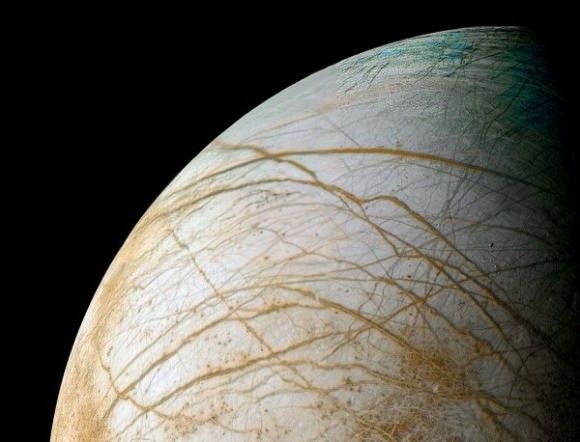
“JUICE will give us better insight into how gas giants and their orbiting worlds form, and their potential for hosting life,” said Professor Alvaro Giménez Cañete, ESA’s Director of Science and Robotic Exploration.
The JUICE spacecraft was originally supposed to join a NASA mission dedicated to the investigation of Europa, but NASA deemed their proposed mission too costly and it was cancelled. According to Robert Pappalardo, study scientist for the Europa mission based at JPL, NASA may still supply some instruments for the spacecraft “assuming that the funding situation in the United States can bear it.”
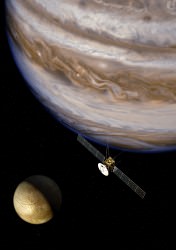
JUICE will also capture images of Jupiter’s moon Callisto and search for aurorae in the gas giant’s upper atmosphere, as well as measure the planet’s powerful magnetic field. Once arriving in 2030, it will spend at least three years exploring the Jovian worlds.
Read more in today’s news release from Nature, and stay tuned to ESA’s JUICE mission page here.
Recalibrated Galileo images © Ted Stryk. See more of Ted’s excellent work on his site Planetary Images From Then And Now.

